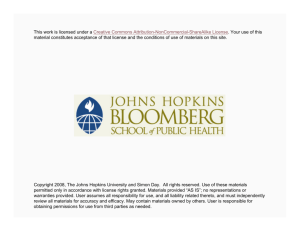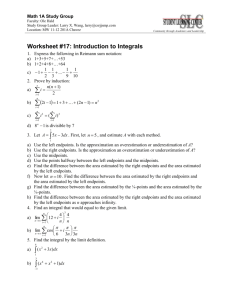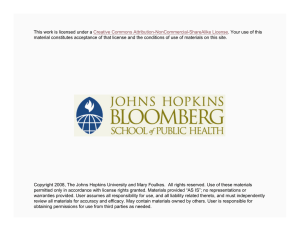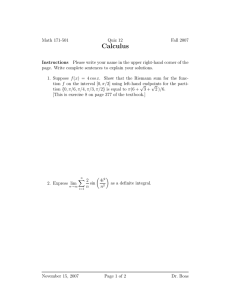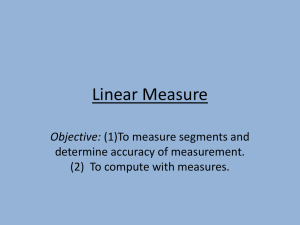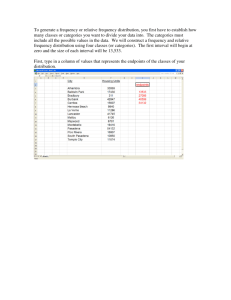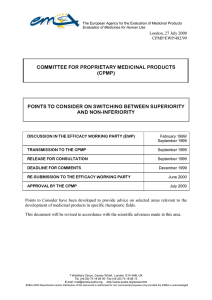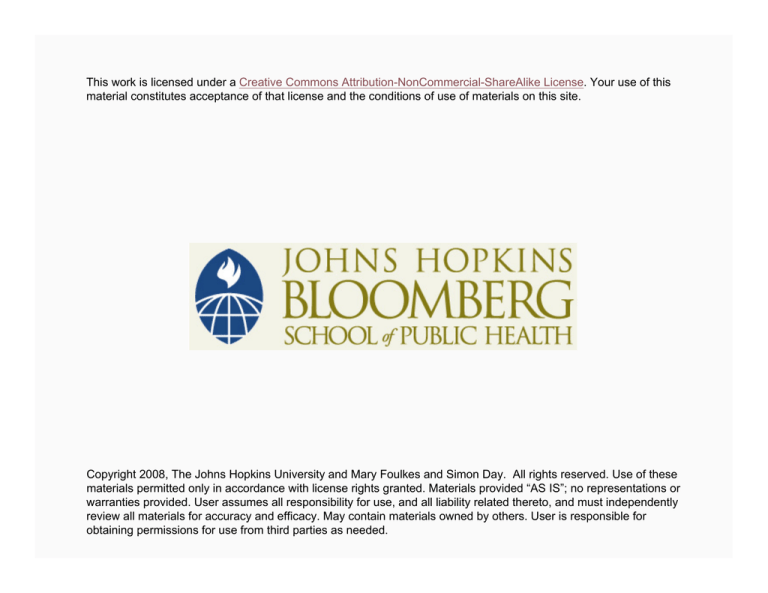
This work is licensed under a Creative Commons Attribution-NonCommercial-ShareAlike License. Your use of this
material constitutes acceptance of that license and the conditions of use of materials on this site.
Copyright 2008, The Johns Hopkins University and Mary Foulkes and Simon Day. All rights reserved. Use of these
materials permitted only in accordance with license rights granted. Materials provided “AS IS”; no representations or
warranties provided. User assumes all responsibility for use, and all liability related thereto, and must independently
review all materials for accuracy and efficacy. May contain materials owned by others. User is responsible for
obtaining permissions for use from third parties as needed.
A Course Summary and Review
Mary A. Foulkes, PhD
Simon J. Day, PhD
Johns Hopkins University
History and Purpose of Regulation
1906: Food and Drugs Act
1962: Kefauver-Harris Amendments
Early 1960s: Thalidamide
1968: UK Medicines Act
1990: The International Conference on Harmonisation of Technical
Requirements for Registration of Pharmaceuticals for Human Use
(ICH)
“Promoting and protecting public health”
QuickTime™ and a
Graphics decompressor
are needed to see this picture.
Image source: Science. (2006).
3
Study Designs
Types of design:
− Parallel, cross-over, factorial, cluster
Phases and purposes of trials
− Control groups, chronic vs. acute, exploratory vs. confirmatory,
etc.
What are the objectives?
4
Objectives and Hypotheses
Hierarchy of strength of evidence
Phases of studies and different objectives
5
Study Population
Eligibility criteria
− Who is included; who is excluded
− Feasibility, generalizability, enrichment designs
From population down to study sample
We must ask:
− “To whom do the results apply?”
6
Study Designs
Treatment allocation, blinding, and randomisation
Stratification, blocking, clustering (adaptive methods)
Open label, single-blind, double-blind
Methods with problems
Practical management problems
7
Control Groups
“Adequate and well-controlled studies”
Types of control:
− Placebo, no treatment, active control (historical controls)
ICH E10 (Choice of Control Group in Clinical Trials)
8
Placebos
Reasons and justifications
The “placebo effect”
Placebo or “no treatment” control
Ethics of placebo control
9
Outcomes and Endpoints
Definitions
− Endpoints are not the same as objectives
What’s in a “good” endpoint?
Clinical endpoints, surrogate endpoints, objective endpoints,
subjective endpoints . . .
Primary, co-primary, composite endpoints
10
Surrogate Endpoints
Why? What’s the justification?
Surrogates and biomarkers
“Validation”
Limitations
Risks and benefits in public health
Risks and benefits in licensing decisions
11
Analysis Issues
Intention to treat
What question are we asking?
Who wants to know the answer?
− And what question do they want answered?
Dangers of not including all the subjects in the analysis (sub-group if
compliers/non-compliers)
Comment from various regulatory guidelines
12
Analysis Issues
Subgroups and post-hoc analyses
Dangers of multiple analyses
Pre-specification of analysis plan
“Post-hoc” analysis (“fishing expeditions”)
Too many and too few(!) statistically significant differences
13
Missing Data
Causes
Relationship to reason for missing data
Problems of bias
Imputation methods
Assumptions to make for analyses
Prevention always better than cure
14
Multiplicity
Sources:
− Multiple treatment arms, controls, sub-groups
Various approaches (“solutions”):
− Bonferroni method, multivariate statistical methods
“Lumping” and “splitting” approaches
15
Non-Inferiority
ICH E9 and ICH E10 guidelines
Meaning of “non-inferiority”
Choice of control group
Purposes of non-inferiority trials
Problems of “bio-creep”
Choice of non-inferiority margin
16
Multi-Regional Studies and Bridging Studies
ICH E5
Ethnic sensitivity
Intrinsic and extrinsic factors
Bridging studies to “fill a hole”
− When are they needed?
What to consider about the need and acceptability of bridging
studies
17
Interim Monitoring
Some history and regulatory status of data monitoring committees
(DMCs)
Food and Drug Administration (FDA) guidance
Committee for Medicinal Products for Human Use (CHMP) guidance
World Health Organization (WHO) guidance
Who sits on a DMC and what do they do?
18
Operational Aspects of DMCs
Statistical considerations
Confidentiality of discussion and results
− Closed session and open sessions
Stand operating procedures
Decision making and reporting
DMC responsibilities
Sponsor access to interim data
Government vs. industry sponsored trials
19



